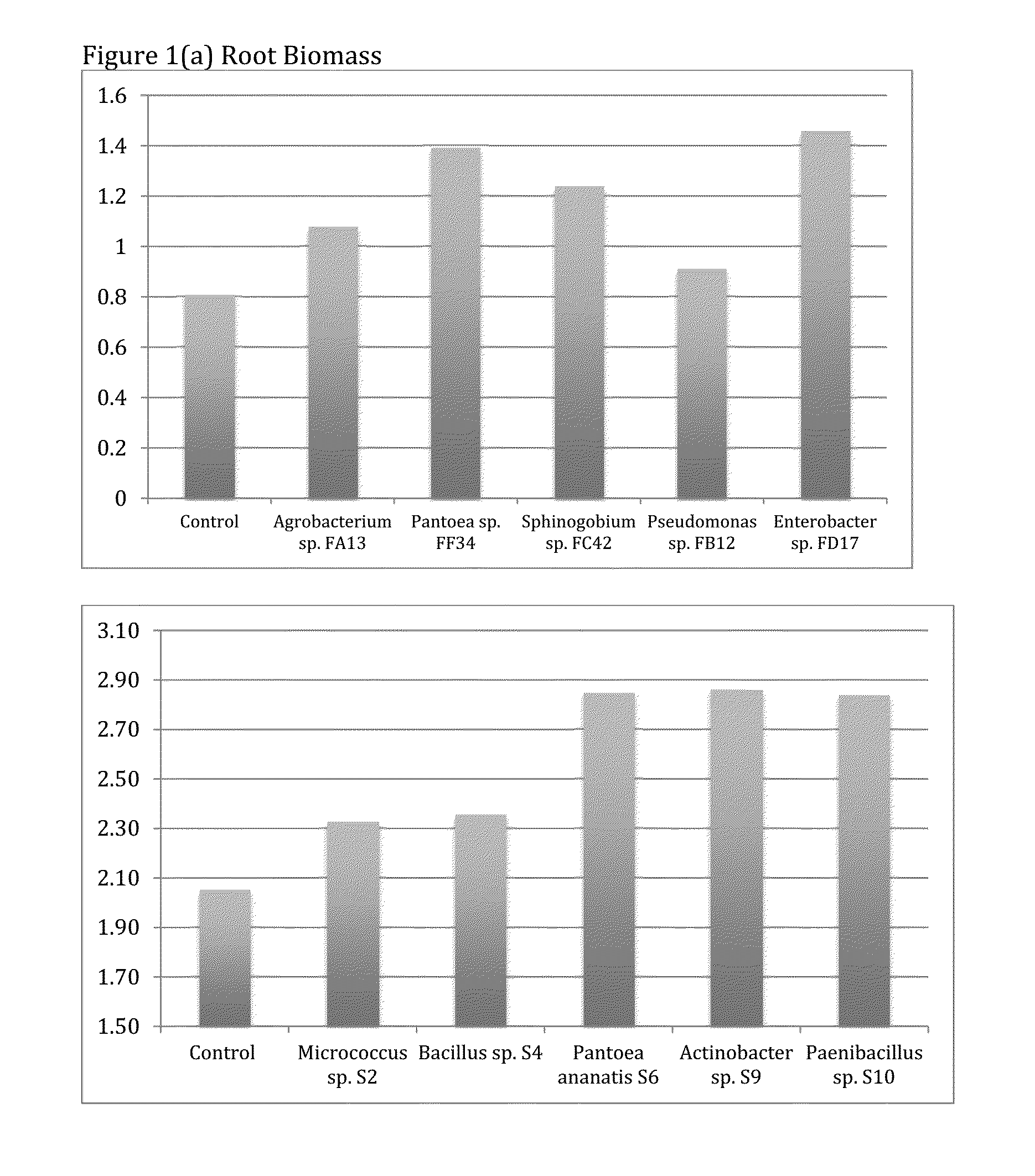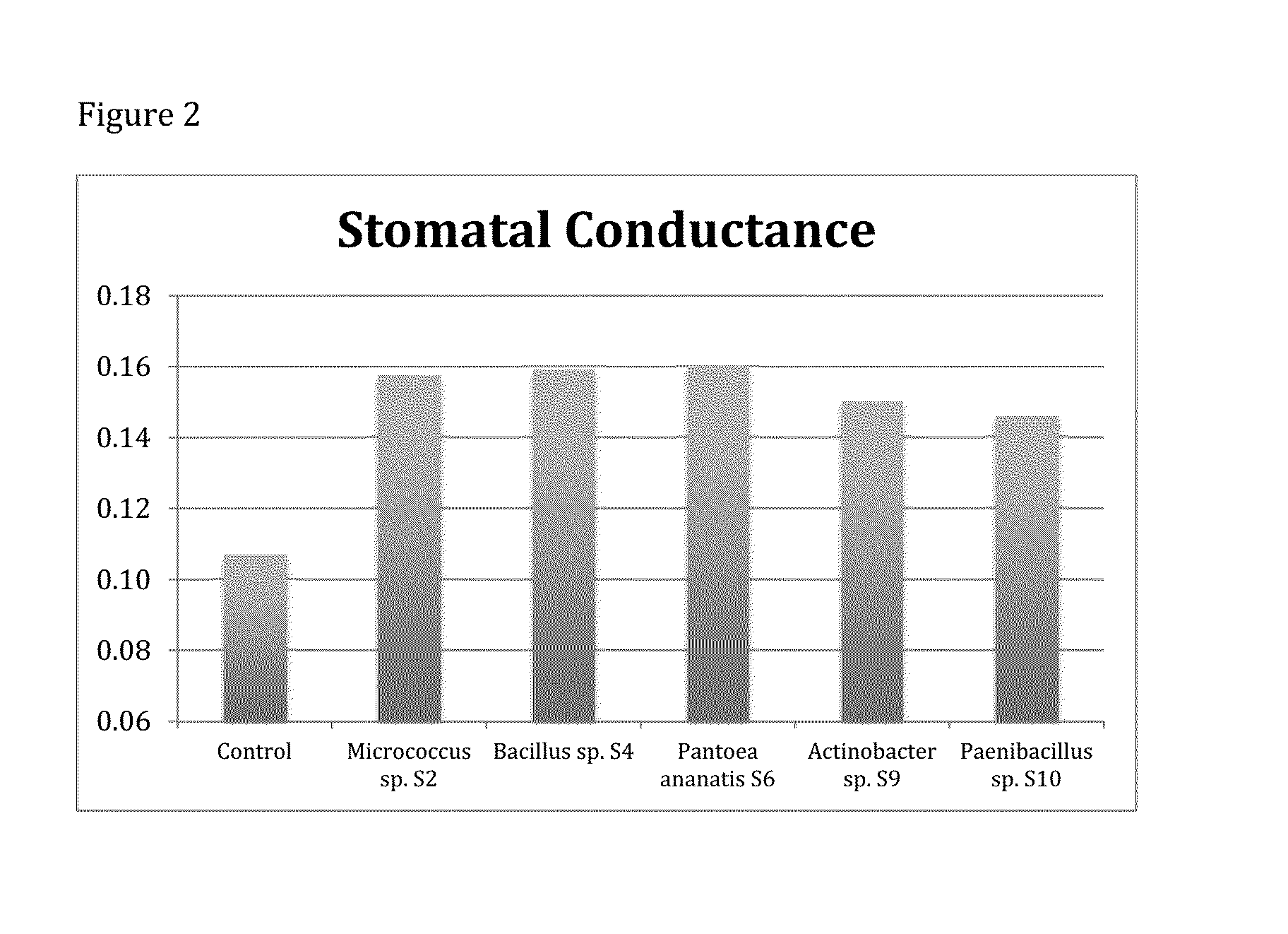Plant-endophyte combinations and uses therefor
- Summary
- Abstract
- Description
- Claims
- Application Information
AI Technical Summary
Benefits of technology
Problems solved by technology
Method used
Image
Examples
example 1
Phenotypic and Physiological Characterization of Microbes
[0130]Bacterial strains from overnight cultures in tryptic soy broth were streaked on tryptic soy agar (TSA) plates and incubated at 30° C. After 24 h, the color and shape of colonies were noted. Cell motility and colony shape were observed under light microscope (Nikon, Japan). The pH limits for bacterial growth was determined by adjusting the pH of the growth media to values between 5 and 12 in triplicates. Bacterial growth on different salt concentrations was tested in TSA medium containing 1-6% NaCl. Furthermore, the ability of the microbes to grow in methanol / ethanol as sole carbon source was analyzed by replacing the glucose with either methanol or ethanol.
[0131]Aggregate formation of bacterial strains can positively affect their dispersal and survival in the plant environment and adsorption to plant roots. The extent of aggregation formation was measured in six replicates following the method of Madi and Henis (1989) Pl...
PUM
 Login to View More
Login to View More Abstract
Description
Claims
Application Information
 Login to View More
Login to View More - R&D
- Intellectual Property
- Life Sciences
- Materials
- Tech Scout
- Unparalleled Data Quality
- Higher Quality Content
- 60% Fewer Hallucinations
Browse by: Latest US Patents, China's latest patents, Technical Efficacy Thesaurus, Application Domain, Technology Topic, Popular Technical Reports.
© 2025 PatSnap. All rights reserved.Legal|Privacy policy|Modern Slavery Act Transparency Statement|Sitemap|About US| Contact US: help@patsnap.com



